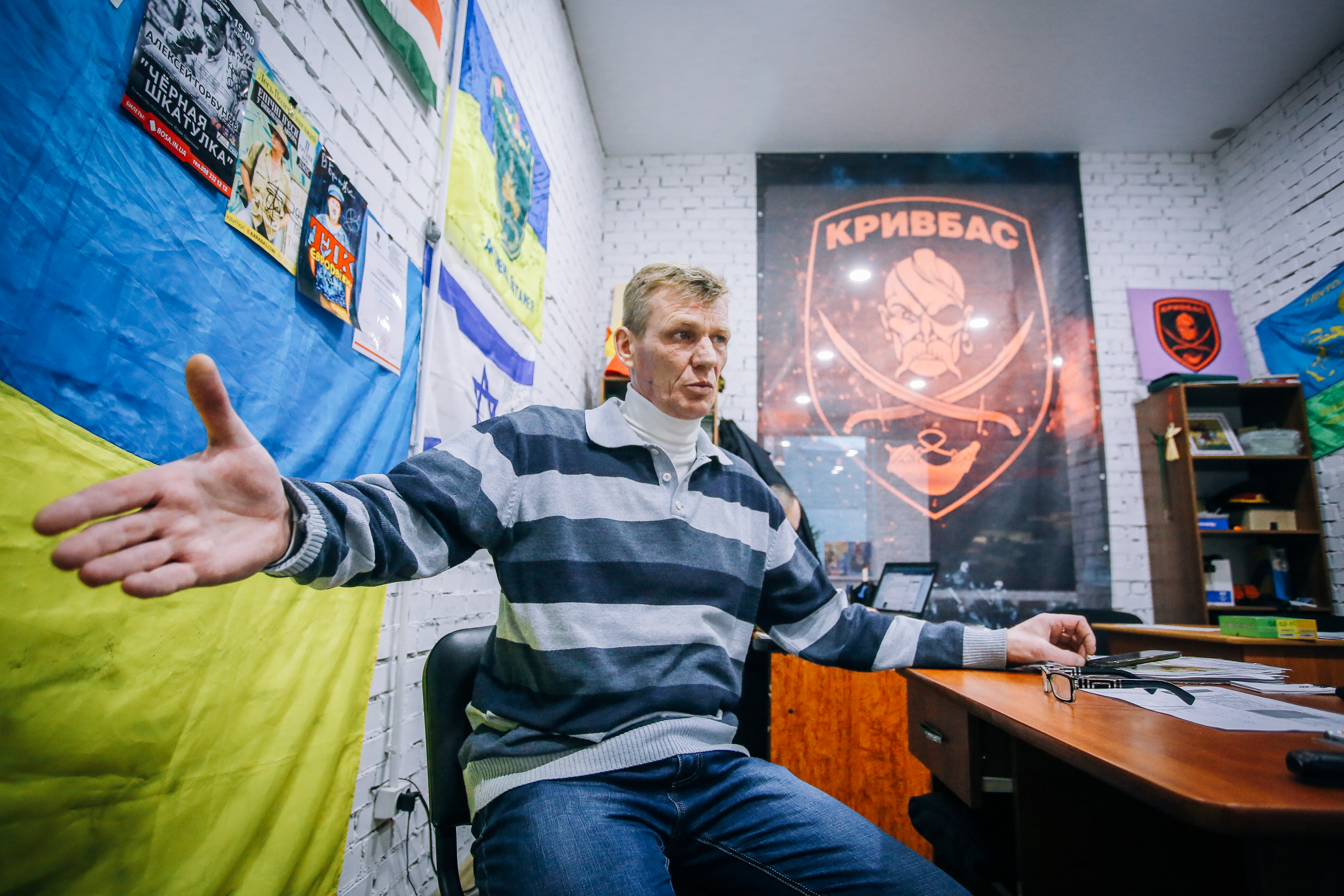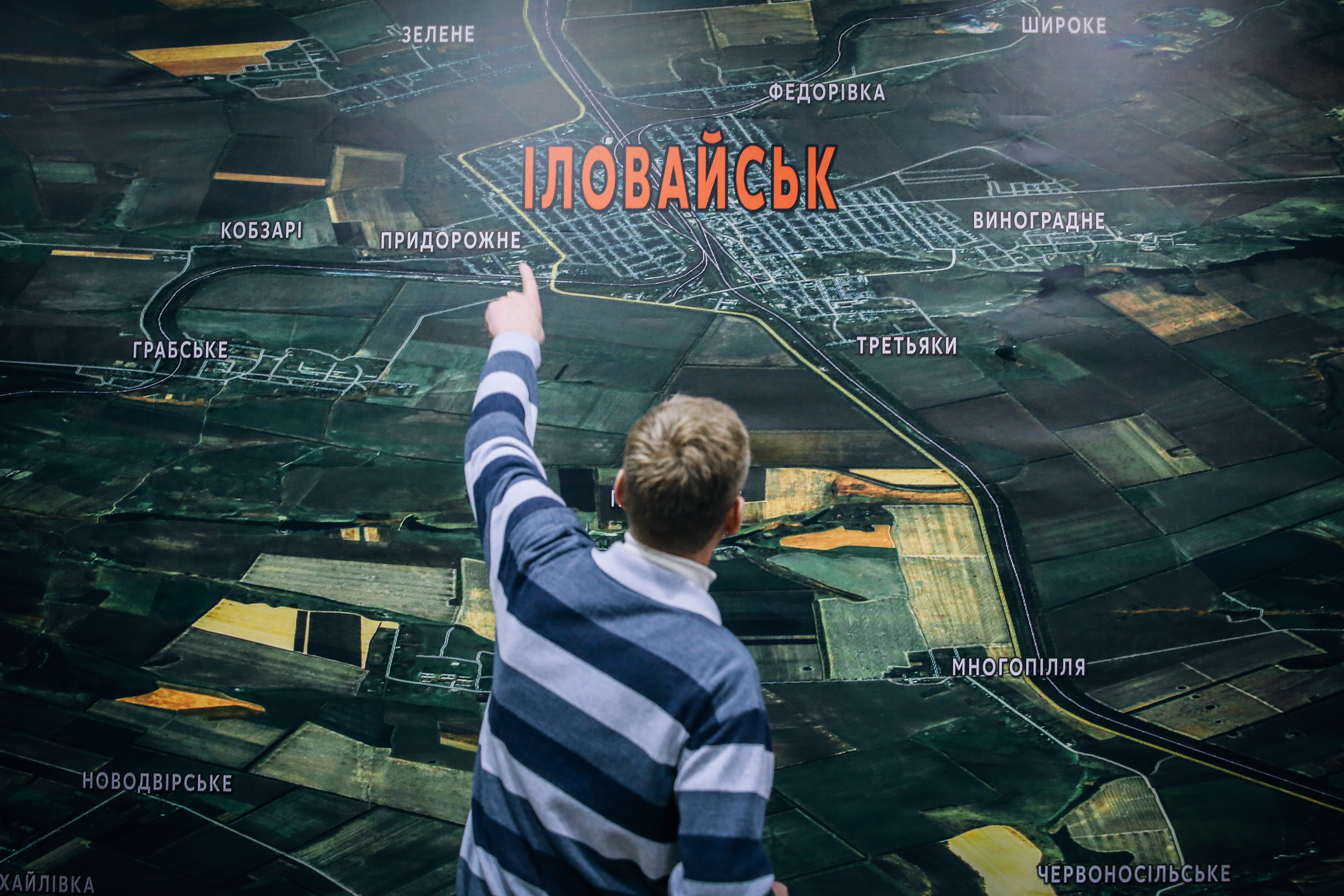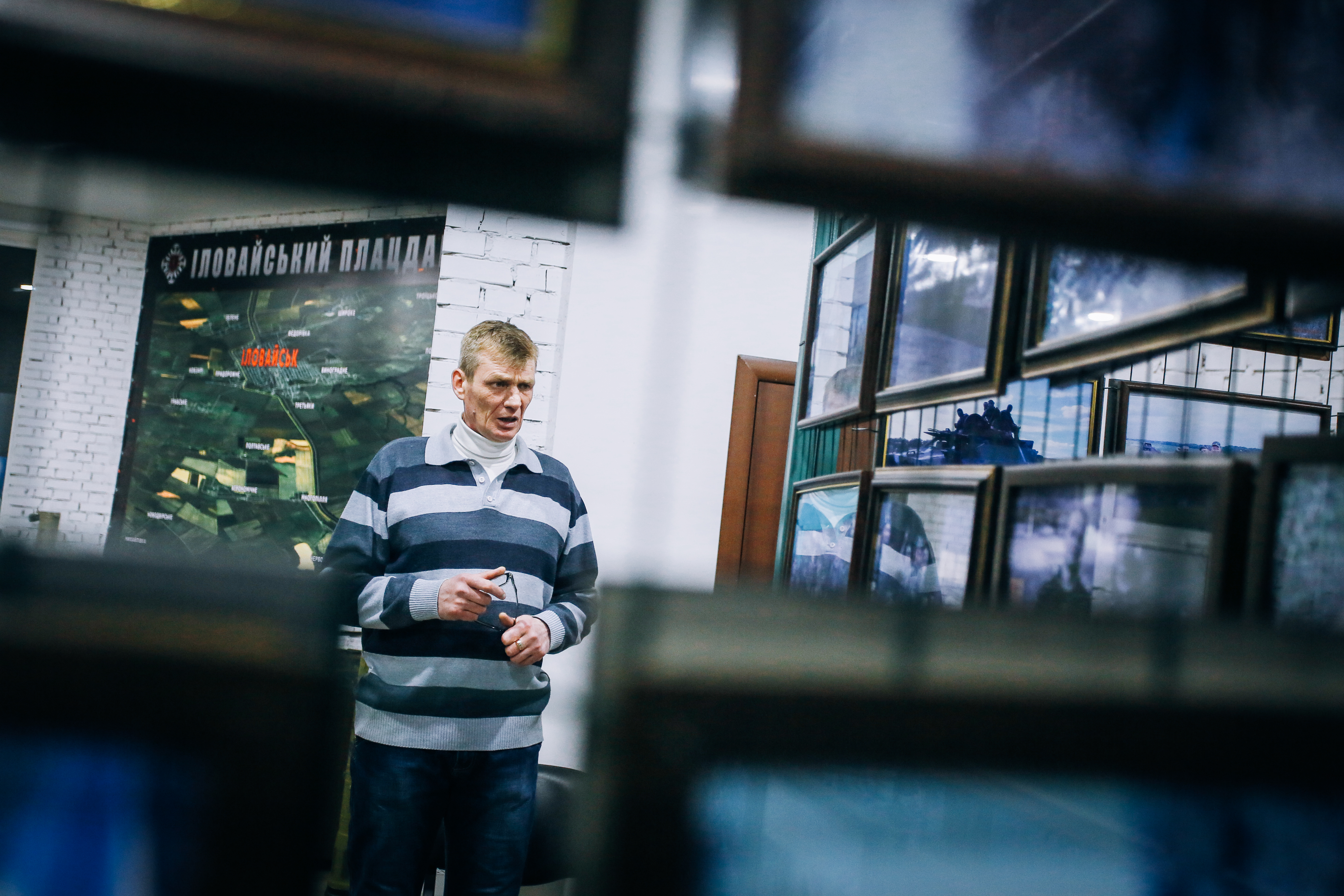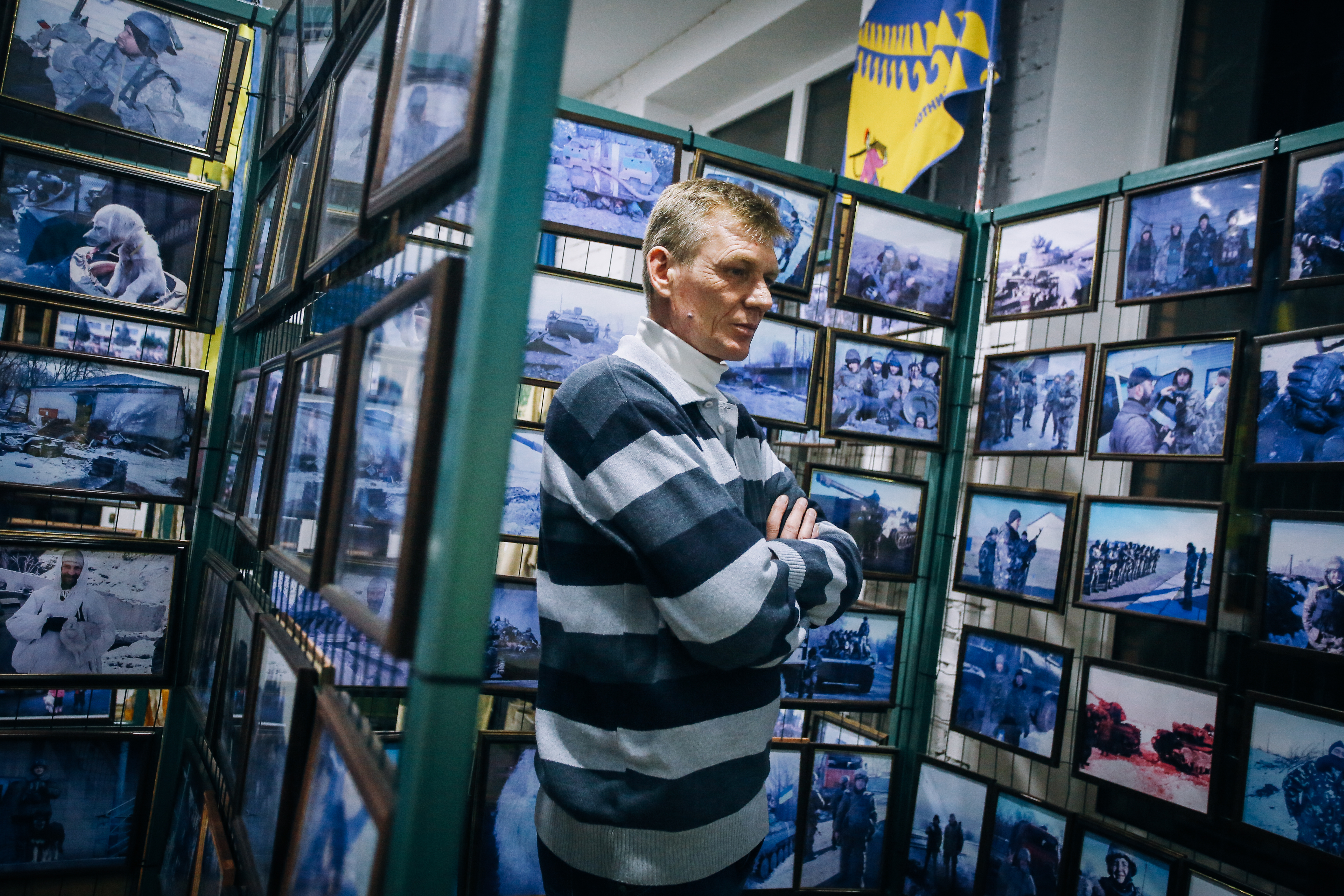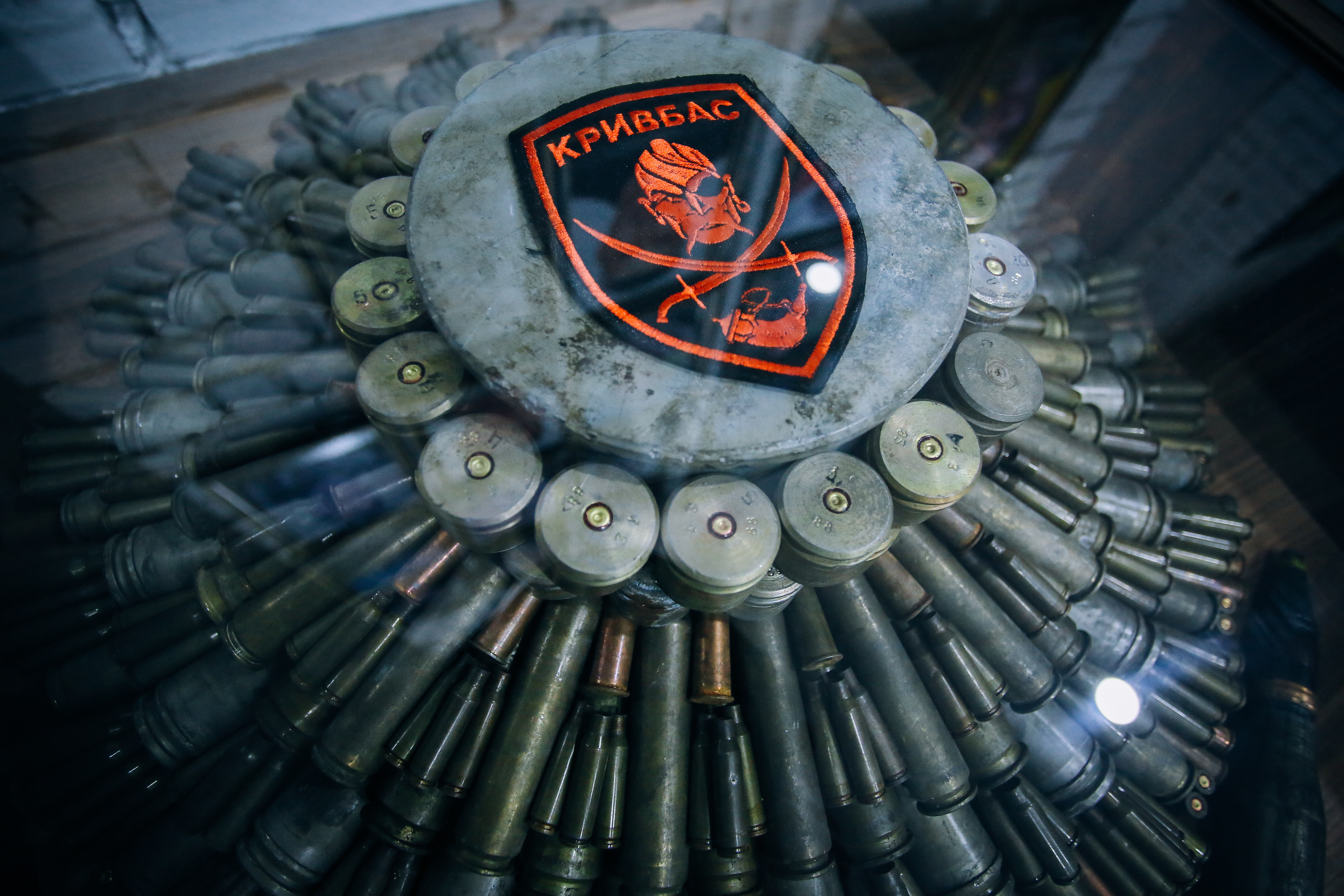Aug. 20, afternoon. Sheltering under a railway bridge by the village of Zelene
The ground swam before his eyes and he started feeling unusually calm. Colonel Yuriy Sinkovsky realized he was bleeding: shell shrapnel had hit him in the back and neck, and one fragment had pierced his lung.
Sinkovsky, who was the deputy commander of the Kryvbas volunteer battalion, was given a shot of painkiller and was left lying on the ground, without any hope of help. His unit of 52 men had been cut off from the rest of Ukrainian forces since they had taken the village of Zelene, north of Ilovaisk, early on Aug. 9.
They had been ordered to hold this strategic position for just a few days, preventing Russian-led forces in Ilovaisk from getting reinforcement from their strongholds in Khartsyzsk and Donetsk.
But as the fighting for Ilovaisk continued, the defenders of Zelene were running short on supplies, and were getting more and more desperate.
“I was telling my guys to wait for another day or two, and the reinforcements will come. But the storming of Ilovaisk was a failure. Our morale was low,” Sinkovsky remembers
Bad idea
Formed in May 2014 by residents of the industrial city of Kryvy Rih, the Kryvbas volunteer battalion was set up to defend Dnipropetrovsk Oblast from Russian proxy forces and a potential invasion by the Russian regular army.
But in early summer the battalion’s 411 fighters, a third of whom wore tracksuits in absence of a military uniform, were sent to the Donbas.
From early August, the army started using Kryvbas as the main attack force to storm the strategically important railway junction of Ilovaisk.
Sinkovsky, a former professional military man with peacekeeping experience in Transnistria and the former Yugoslavia, was responsible for conducting the two-week military training of the battalion’s fighters. He warned the army commanders that his soldiers were not ready for combat.
“They gathered coal miners and computer engineers and wanted them to be able to storm the enemy in two weeks,” he said. “That’s impossible.”
Dug outs
Sinkovsky said his unit managed to take Zelene easily in a surprise attack during the night. Then, to survive under constant shelling, the soldiers dug in by the local railway, hiding under a railway bridge and also making pillboxes out of train wagons loaded with coal.
“We were getting hit with up to 400 shells per day, including mortar shells and Grad (rockets),” he said. “But the railroad wagons and bridge under which we were hiding were saving us.”
Sinkovsky had his first lucky escape on Aug. 10, when a Russian-led fighter from a reconnaissance group, who had sneaked into Zelene, shot at him from Kalashnikov. The bullets hit the colonel’s bullet-proof vest, destroyed his Kalashnikov assault rifle, and grazed his cheek.
After the ensuing firefight, which continued for nine hours, Sinkovsky asked the mayor of Zelene to send the dead bodies of the Russian-led fighters back to Khartsyzsk. Later he received a phone call from a Russian proxy forces commander who had the nom-de-guerre Fergana, who promised to stop shelling the Ukrainians for the next day if they returned the bodies of the Russian-led fighters.
But later, Fergana warned, they would all be killed.
Salvation
Early on Aug. 20, Russian proxy forces attacked Zelene with tanks. One tank stopped just 600 meters from the Ukrainian positions. One brave soldier, Pavlo Voronych, managed to stop the tank, hitting its viewing window with a machine gun. He was gravely wounded in the pelvis after that.
Sinkovsky, Voronych, and three other soldiers were lying under the bridge. The colonel was drifting in and out of consciousness, and some thought he was already dead.
Sinkovsky thanks his cousin, a popular Kyiv showman, for his salvation. His cousin managed to contact the people of the Dnipropetrovsk Oblast governor, the oligarch Ihor Kolomoisky, and pressure them into organizing an evacuation of Zelene. Sinkovsky and the other wounded were evacuated initially by APC and then by military helicopter to Dnipro (then Dnipropetrovsk) city.
He spent a month-and-a-half in hospital. But his unit held their positions in Zelene until Aug. 29, when they left the village by the notorious “green corridor,” losing 22 of their soldiers killed, according to the Memory Book citizen volunteer project.
Fifteen soldiers from the Kryvbas battalion are still believed to be missing after Ilovaisk, although initially the battalion wasn’t officially acknowledged as participating in the Ilovaisk operation.
It took a year for Sinkovsky to prove that his soldiers were in Ilovaisk and obtain for his fighters the perks of having the status of war veterans. He now works as a deputy head of the battalion’s museum in Kryvy Rih, a building where one wall is completely covered with portraits of the killed soldiers.
Until recently, Sinkovsky kept in contact with the mayor of the now Russian-occupied village of Zelene. He promised that someday the Kryvbas fighters would return, and help to rebuild the houses that were destroyed during the fighting.
Information about the Kryvbas battalion
The Kryvbas battalion, later known as the 40th Territorial Defense Battalion, was formed in May 2014 from volunteers from the city of Kryvy Rih and the nearby area to protect Dnipropetrovsk Oblast from Russian proxy forces. The battalion was part of Ukraine’s armed forces, but was also largely supported by the then-governor of Dnipropetrovsk Oblast, the oligarch Igor Kolomoisky. Kolomoisky paid the fighters a second salary equal to the one paid by the army.
The Kryvbas battalion lost 27 soldiers killed and 87 wounded during the Ilovaisk operation. Some 30 soldiers were taken captive, and 15 soldiers are still believed to be missing after Ilovaisk. In December 2015 the battalion was disbanded. Some 50 of its former soldiers now serve in Ukraine’s armed forces.
